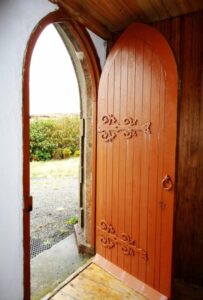There is a well-known prayer that is ascribed to Teresa of Avila, who was a 16th century Carmelite nun, and a mystic, reformer and writer. The prayer goes like this:
 Christ has no body but yours,
Christ has no body but yours,No hands, no feet on earth but yours,
Yours are the eyes with which he looks
Compassion on this world,
Yours are the feet with which he walks to do good,
Yours are the hands, with which he blesses all the world.
Yours are the hands, yours are the feet,
Yours are the eyes, you are his body.
Christ has no body now but yours,
No hands, no feet on earth but yours,
Yours are the eyes with which he looks
compassion on this world.
Christ has no body now on earth but yours.
When this prayer is used in a liturgical setting, what follows is usually a charge that we are then to go into the world and be Christ’s body. We are to be Christ’s hands and be Christ’s feet and be Christ’s eyes of compassion on this earth. I am pretty sure that I have given this charge perhaps more than once as a benediction to our worship together.
I find this prayer and charge to be very compelling and challenging.
I also find it intimidating.
How am I supposed to be Christ’s body on earth when I can barely handle my own body within the bounds of my own life? I am a great admirer of Teresa of Avila, but she was a nun after all and as a nun she did not have the challenges of being a wife and a mother, head of the PTA and coach of at least two of the kids’ sport teams. And then of course, as a nun, she must have been living in a rarified realm of spirituality, set apart from the messiness of the world. She may be the hands, feet and eyes of Christ, but I don’t really think that it is fair for her to ask me to be so as well. Right?
Wrong. Lately, I have come to see how misguided I have been about this way of reading Teresa of Avila’s prayer.
First of all, let’s be clear. Being a nun is nothing but challenging especially for this remarkable reformer who worked in an extremely messy and dangerous time of great upheaval. We may have our stresses and challenges but she was no stranger to them as well.
I have also been misguided because I had always heard in this prayer a responsibility to become Christ’s hands, feet and eyes. The charge as I understood it was to put “become Christ-like” on the top of my “to do” list. This filled me with a kind of dread and stress because, if Christ has no other hands, feet and eyes than mine, then I had better get my hands, feet and eyes in a shape that would be worthy of being Christ’s because God knows the world really needs Christ’s hands and feet and eyes, but that begs the question how in the world does one even begin going about that? Is becoming Christ-like something we are supposed to know how to do?
But, there is another way of hearing Teresa of Avila’s words. There is a familiar Spanish expression that is “Mi casa es su casa!” (my house is your house). These are words of hospitality spoken to a guest to welcome that guest into one’s home. These words are to put the guest at ease, and invite them to dwell in the house as if it were their own. “Roam freely, use what you need, relax and enjoy. Every space within this house of mine is yours. Do with it what you will.”
What if that kind of invitation and hospitality is what this prayer is driving at? What we are to invite Christ to dwell within us? What if we are to make space, open the doors, throw open the windows and invite Christ to roam freely in our life. There is ease, time and a spaciousness in such an invitation. We are a church that knows hospitality. We are a church that knows how to make someone feel welcome, and cared for and loved. We know how to do that and we do it well.
So what if we were to extend that same invitation to God? I wonder then what transformation we would begin to see in our hands and our feet and in our eyes if Christ was free to dwell within us and make our lives his own. That I can try to do. Do you think you can too?
